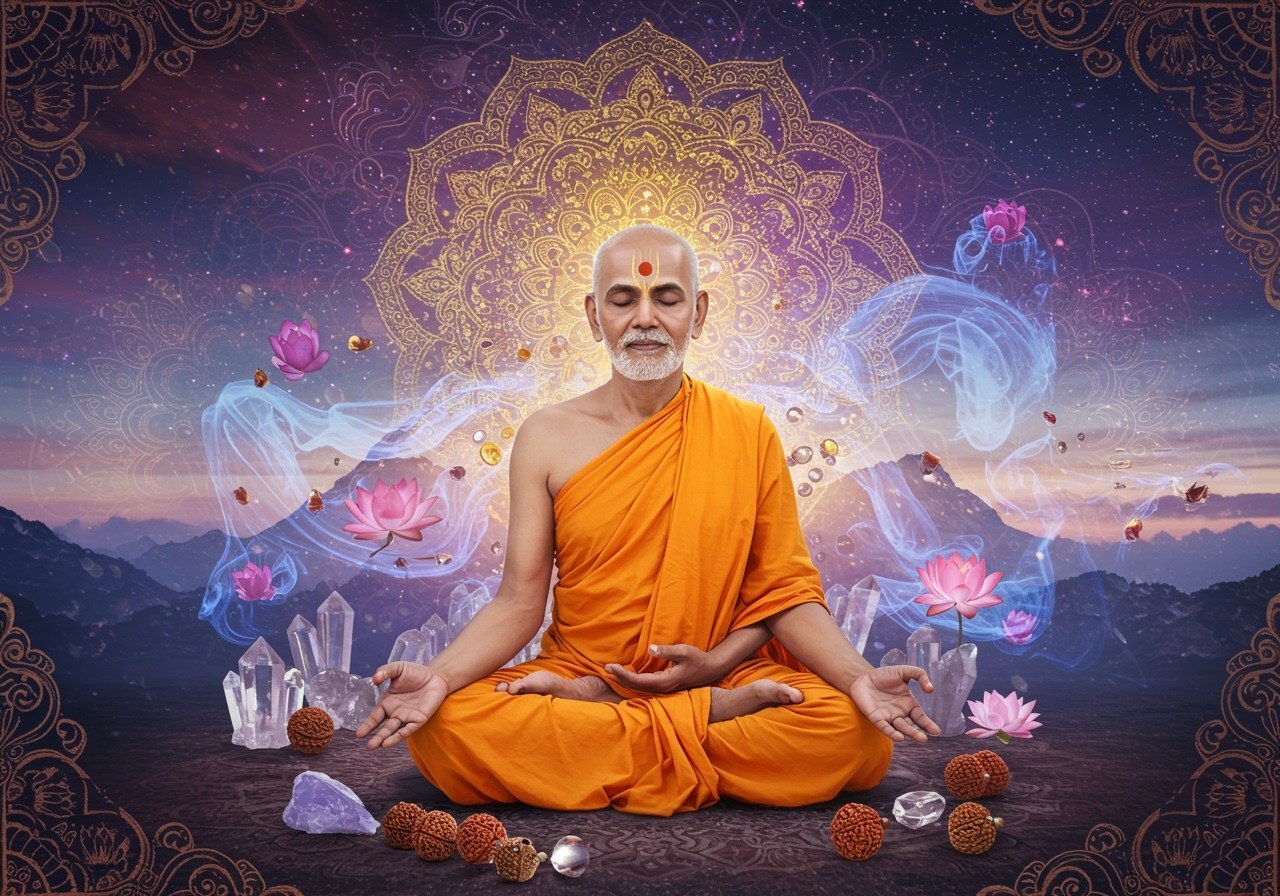
Delving into the teachings of Swami Sivananda unveils a holistic approach to life, beautifully integrating mind, body, and spirit. This revered spiritual teacher emphasized the profound importance of yoga and meditation for achieving inner harmony and balance. Rooted in ancient Indian traditions, his wisdom continues to resonate deeply in our modern, fast-paced world.
Introduction to Sivananda’s Teachings
Swami Sivananda’s philosophy revolves around the interconnectedness of mind, body, and spirit. His teachings encourage self-discipline, ethical conduct, and spiritual evolution. Yoga and meditation serve as cornerstones, guiding individuals towards mindfulness and a profound sense of inner peace.
- Yoga: More than just physical postures, yoga, as taught by Swami Sivananda, is a practice to strengthen the body, enhance flexibility, and cultivate a calm and focused mind. It prepares the body and mind for the deeper practice of meditation.
- Meditation: A pathway to clarity and enlightenment, meditation, in the Sivananda tradition, involves various techniques to quiet the mind, allowing us to connect with our inner selves and experience a deep sense of peace and tranquility.
Sivananda Ashrams serve as vital centers for learning these practices, playing a significant role in disseminating his teachings globally. Grasping these principles lays a solid foundation for personal growth and well-being in the midst of modern life’s complexities.
Understanding Meditation in the Sivananda Tradition
Swami Sivananda’s teachings offer a unique and transformative path to meditation, seamlessly blending ancient wisdom with practices relevant to our contemporary lives. His approach emphasizes attaining mental clarity and spiritual awakening. At its core lies the simple yet profound principle of stilling the mind to connect with the true self.
Key Aspects of Sivananda Meditation
Techniques:
- Concentration (Dharana): Fixing the mind on a single point, whether it’s an internal focus like a chakra or an external object like a deity’s image, helps to anchor the mind, fostering tranquility and focus. This practice strengthens mental discipline and prepares the mind for deeper meditative states.
- Mantra Repetition (Japa): Repeating sacred mantras such as “Hari Om” or “Om Namo Narayanaya” serves as a powerful tool to quiet the mental chatter and maintain focus. The rhythmic chanting creates a soothing vibration that calms the nervous system and elevates consciousness.
- Visualization: Creating mental images, visualizing colors, light, or shapes, can be a powerful aid in channeling energy and focusing attention. This technique can transform meditation into a vibrant inner experience, enhancing focus and concentration.
- Breath Awareness (Pranayama): Regulating the breath through conscious breathing exercises (Pranayama) is essential for calming the mind, increasing energy levels, and preparing the body for meditation. Controlled breathing creates a bridge between the physical and subtle bodies, promoting a sense of inner stillness.
You can find beautiful Japa Malas to support your mantra meditation practice at poojn.in. We offer a variety of materials, including Tulsi, which is considered sacred in the Hindu tradition (Tulsi Japa Malas).
Types of Meditation:
- Saguna Dhyana (Concrete Meditation): Meditating on a specific form, such as Lord Krishna, Rama, or a chosen deity, offers a tangible focus for the mind. This approach personalizes the meditation experience, fostering a sense of connection and devotion. You can find beautiful Murtis of deities like Lord Shiva and Adiyogi at poojn.in to enhance your meditation practice.
- Nirguna Dhyana (Abstract Meditation): Focusing on the Self (Atman) or Brahman, this practice transcends the limitations of form and delves into the formless essence of existence. It requires a deeper level of introspection and understanding of spiritual concepts.
Importance of Preparation:
Preparing the mind and body for meditation is crucial. Swami Sivananda emphasizes the importance of purifying the mind through right conduct and ethical living before embarking on meditative practices. This creates a fertile ground for deeper focus, clarity, and receptivity during meditation.
Benefits of Sivananda Meditation
Regular meditation practice, as taught by Swami Sivananda, offers a wealth of benefits for overall well-being:
- Inner Peace and Serenity: A calm and focused mind naturally cultivates a deep sense of inner peace and serenity, allowing us to navigate life’s challenges with greater equanimity.
- Stress Reduction: Meditation is a powerful tool for managing stress and anxiety. It helps to regulate the nervous system, promoting relaxation and reducing the negative impact of stress on the mind and body.
- Improved Concentration and Mindfulness: Regular meditation practice enhances focus and attention, making it easier to concentrate on tasks and be fully present in daily life. This heightened awareness improves productivity and reduces mental distractions.
- Emotional Resilience: Meditation strengthens emotional resilience, providing the inner strength and stability to navigate difficult emotions and challenging situations with greater composure and wisdom.
- Overcoming Negative Thoughts: Meditation empowers us to observe our thoughts without judgment, allowing us to identify and break free from negative thought patterns that can hinder our happiness and well-being.
- Increased Energy and Vitality: By calming the mind and balancing the nervous system, meditation can increase energy levels and promote a sense of vitality and enthusiasm for life. It recharges our inner batteries, leaving us feeling refreshed and revitalized.
- Improved Physical Health: Studies have shown that regular meditation can have positive effects on physical health, including lower blood pressure, improved oxygen supply to the cells, and a strengthened immune system.
Mindfulness in Sivananda’s Philosophy
Mindfulness involves being fully present in the current moment without judgment. While the term “mindfulness” might not be explicitly mentioned in all of Swami Sivananda’s teachings, its essence is deeply interwoven throughout his meditation practices.
Connection to Mindfulness
- Present Moment Focus: Techniques like breath awareness (Pranayama) and body scans encourage us to anchor our attention in the present moment, cultivating a deeper awareness of our physical sensations, thoughts, and emotions.
- Non-Judgmental Observation: Sivananda’s teachings advocate for observing thoughts and emotions without suppression or judgment. This allows us to cultivate a more accepting and compassionate relationship with our inner world.
- Integration into Daily Life: Sivananda encourages extending the practice of concentration and mindfulness beyond formal meditation into everyday activities. This allows us to infuse even mundane tasks with a sense of presence and awareness, enriching our overall experience of life.
Sivananda meditation nurtures mindfulness by training the mind to focus, observe without bias, and fully embrace the present moment. This cultivates inner peace and offers a pathway to a more harmonious and fulfilling life. Learn more about mindfulness and meditation in our blog posts on mindfulness meditation and meditation for children.
Embracing the Sivananda Path
Sivananda’s teachings on meditation and mindfulness provide a profound and transformative journey towards inner peace and spiritual growth. By integrating these practices into our daily lives, we can find greater clarity, reduce stress, and enhance emotional resilience. The simplicity and depth of Sivananda’s methods make them accessible to everyone, regardless of experience level. You can further explore the Bhagavad Gita’s impact on modern life and the significance of cleanliness in Hindu rituals in our dedicated blog posts, The Bhagavad Gita’s Impact on Modern Life and Cleanliness in Hindu Rituals.


